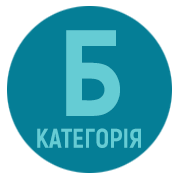Integration of dance and sports and health activities into the choreographic education system
DOI:
https://doi.org/10.24195/artstudies.2025-3.11Keywords:
integration, dance activities, sports and health activities, physical abilities, choreographic educationAbstract
The study is devoted to topical issues of integration of dance and sports and health activities.The concept of “integration of dance and sports and health activities” is substantiated, which creates prerequisites for combining sports and health practices and dance practices in order to preserve and strengthen children’s health. Based on a theoretical analysis of scientific and methodological sources, it has been determined that the design of the integration of dance and sports and health activities involves the use of certain methodological provisions based on the principles of expediency, creativity, integrativeness, dialogue, systematicity, variability, interest and freedom of choice. It is noted that this model is variable (specified in accordance with educational and pedagogical conditions) and multifunctional (the desire of teachers to solve a wide range of tasks of education, upbringing and development of the child through the integration of components of two types of activities). The structure of integration is defined, which is formed on the basis of target, functional, activity and result components, ensuring the dialogue coexistence of system elements and the creation of a comfortable socio-cultural environment for the comprehensive development of the individual. The requirements for the organisation of technological (educational and upbringing process, individualisation and differentiation of learning, academic performance), socio-cultural (social interaction, co-creation) and communicative (mutual respect) components for the effective implementation of the model of integration of dance and sports and health activities in the process of choreography classes. When choosing teaching methods in the process of practical activities, we suggest focusing on the age and individual characteristics of children, their interests, physical fitness, level of special knowledge and practical skills in the field of choreography and physical education.
References
1. Биковськa, О. (ред.) (2021). Стратегія розвитку позашкільної освіти. ІВЦ АЛКОН.
2. Голенкова, Ю. (2014). Вплив засобів ритміки і хореографії на фізичну підготовленість дітей молодшого шкільного віку. Теорія та методика фізичного виховання, 3, 39–43.
3. Гузь, О. (2009). Ритміка і хореографія: авторська навчальна програма для учнів початкової та основної школи. Початкова школа, 2, 48–53.
4. Захарчук, Н. (2020). Сучасні тенденції розвитку фізичних якостей танцівника засобами класичного танцю. Актуальні проблеми розвитку культури, мистецтва та освіти: збірник матеріалів наукових читань. Луцьк: СНУ імені Лесі Українки, 35–37.
5. Кизім, В. (2016). Технологія викладання ритміки і хореографії та вплив на фізичну підготовленість студентів інституту фізичного виховання і спорту. Київ.
6. Комплексна програма художньо-естетичного виховання учнів у загальноосвітніх та позашкільних навчальних закладах. URL: http://www.yur-info.org.ua/index.php?lang_id=1&menu_ id=1182 &article_id
7. Літовченко, О. (2018). Кінезіологія танцю та складнокоординованих видів спорту: навчально-методичний посібник. Київ.
8. Сосіна, В. (2018). Шляхи інтеграції хореографічного мистецтва та техніко-естетичних видів спорту. Танцювальні студії, 1, 81–90.
9. Тодорова, В. (2017). Концепція хореографічної підготовки у спорті. Фізична активність, здоров’я і спорт, 2 (28), 43–50.
10. Фриз, П. (2007). Хореографічна культура як чинник творчого розвитку особистості дитини [Дис. канд. мистецтвозн., Львівська національна музична академія імені М. В. Лисенка]. Львів.
11. Шевчук, А. (2008). Розвиток дошкільнят в музично-руховій діяльності: навчально-методичне забезпечення програми «Дитина». Київ: Шкільний світ.








